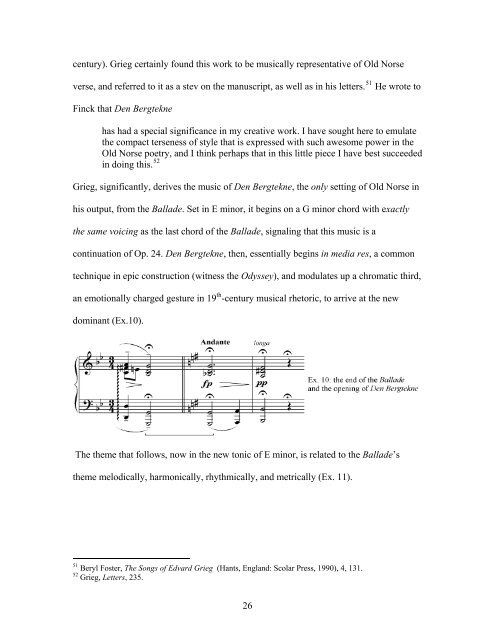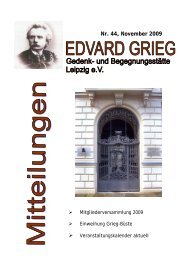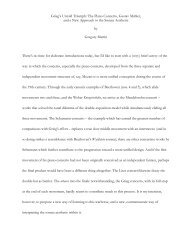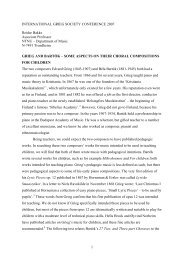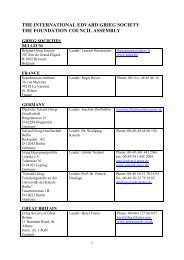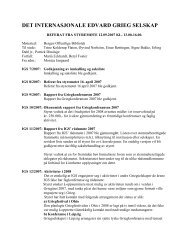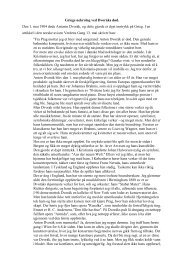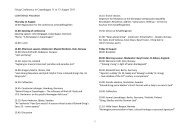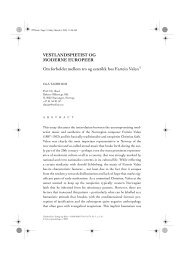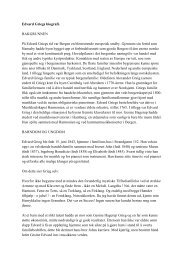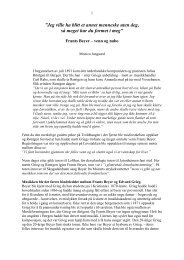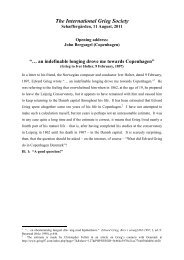Gregory Martin - paper 2007 - Grieg Society
Gregory Martin - paper 2007 - Grieg Society
Gregory Martin - paper 2007 - Grieg Society
You also want an ePaper? Increase the reach of your titles
YUMPU automatically turns print PDFs into web optimized ePapers that Google loves.
century). <strong>Grieg</strong> certainly found this work to be musically representative of Old Norse<br />
verse, and referred to it as a stev on the manuscript, as well as in his letters. 51 He wrote to<br />
Finck that Den Bergtekne<br />
has had a special significance in my creative work. I have sought here to emulate<br />
the compact terseness of style that is expressed with such awesome power in the<br />
Old Norse poetry, and I think perhaps that in this little piece I have best succeeded<br />
in doing this. 52<br />
<strong>Grieg</strong>, significantly, derives the music of Den Bergtekne, the only setting of Old Norse in<br />
his output, from the Ballade. Set in E minor, it begins on a G minor chord with exactly<br />
the same voicing as the last chord of the Ballade, signaling that this music is a<br />
continuation of Op. 24. Den Bergtekne, then, essentially begins in media res, a common<br />
technique in epic construction (witness the Odyssey), and modulates up a chromatic third,<br />
an emotionally charged gesture in 19 th -century musical rhetoric, to arrive at the new<br />
dominant (Ex.10).<br />
The theme that follows, now in the new tonic of E minor, is related to the Ballade’s<br />
theme melodically, harmonically, rhythmically, and metrically (Ex. 11).<br />
51 Beryl Foster, The Songs of Edvard <strong>Grieg</strong> (Hants, England: Scolar Press, 1990), 4, 131.<br />
52 <strong>Grieg</strong>, Letters, 235.<br />
26


